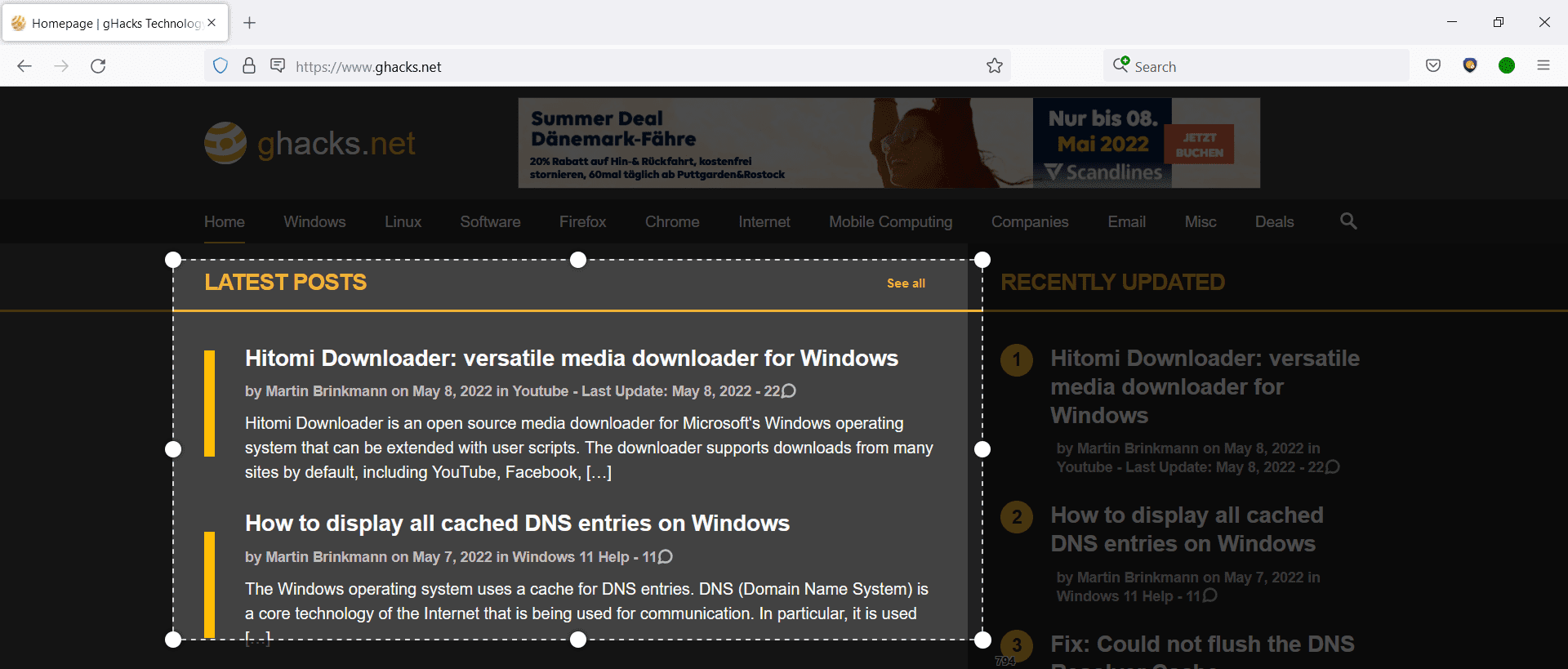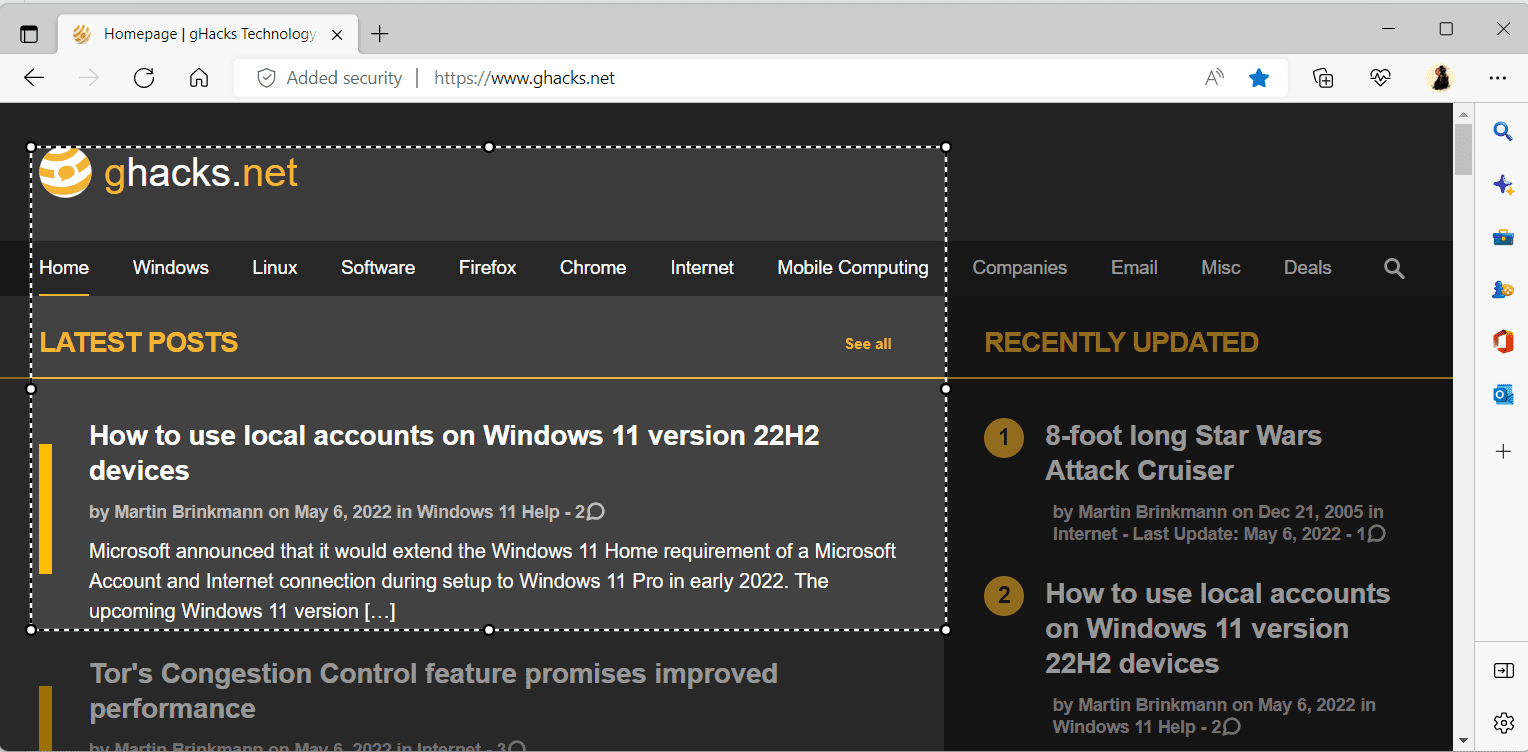Many modern web browsers support screenshot functionality to capture screenshots without leaving the browser, but are these tools really needed?

Firefox users right-click on a page to select the “take screenshot” feature of the browser, Edge users may right-click as well or active the Web Capture option from the browser’s main menu. Google is working on a screenshot feature with editor that it plans to launch in future versions of the Chrome browser. Once in Chrome, it may become available in other browsers based on Chromium.
Capturing screenshots looks like a handy feature in a browser on first glance. It is integrated and ready to be used whenever needed without having to rely on third-party tools or functionality provided by the operating system. Browser users may install extensions to get more options. You can check out our list of six popular screenshot extensions for Chrome as start.
Critics of browser-based screenshot tools argue that there is no need for built-in tools, and that browser makers should instead focus on improving the core of the browser. All modern operating systems support screenshot functionality by default, and these tools can be used to capture better screenshots.
On Windows, users may launch the Snipping Tool from the Start Menu or with the help of keyboard shortcuts to take screenshots. Mac OS users may open the Screenshot tool using keyboard shortcuts or Launchpad to capture screenshots on their devices. Several Linux distributions, including Ubuntu, support native screen capturing tools as well. Opening these tools is usually as easy as opening the browser’s built-in tool. Most are accessible via keyboard shortcuts for quick access.

Besides that, there are numerous third-party screen capturing solutions that extend the basic functionality that these native tools offer. Programs like PicPick, ShareX, Lightscreen, or Flameshot (Linux) offer more features and options. PicPick, for example, supports more screen capturing modes and a powerful screenshot editor. ShareX supports screen recording and text recognition, and uploading tasks right from its interface.
Browser-based screenshot tools are inferior when compared to these third-party solutions, and even the built-in operating system tools may have an edge on them, considering that you can’t use the browser tools to capture the full browser interface.. Some native operating system tools support additional capture modes, such as the option to capture delayed screenshots, which browser tools do not support as well.
Closing Words
Screenshot capturing options are available on most systems by default, even without installing software. They provide better functionality than browser-based screenshot tools, both in regards to capturing options and scope. Third-party tools extend this significantly by adding editing options and other functions to the process.
Are the browser screenshot tools included for feature parity purposes, or are they widely used by users of a particular browser. We don’t have any stats on the use of browser screenshot tools, and it is possible that users prefer built-in solutions because they are right there when needed. Many may not know that they may use the operating system’s screenshot tool as well for the same purpose.
Browser screenshot tools are not needed in my opinion, as there are better tools readily available for the job.
Now you: do you use the screenshot tool of your browser, or do you prefer other solutions?
Thank you for being a Ghacks reader. The post Opinion: No One needs a screenshot tool in a web browser appeared first on gHacks Technology News.
